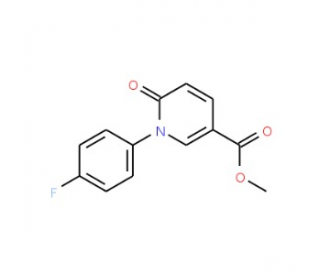详细说明
- Purity>95%, by SDS-PAGE under reducing conditions and visualized by silver stain
- Endotoxin Level<0.01 EU per 1 μg of the protein by the LAL method.
- ActivityMeasured by its ability to induce cAMP accumulation in THP‑1 human acute monocytic leukemia cells. Parsell, D.A. et al. (1996) J. Biol. Chem. 271:27936. The ED 50 for this effect is 8-40 ng/mL.
- SourceE. coli-derived Arg162-Cys185 (A chain) & Lys26-Ser53 (B chain), with an N-terminal Met
- Accession #
- N-terminal Sequence
AnalysisArg162 (A chain) & Met (B chain)
- Structure / FormDisulfide-linked heterodimer
- Predicted Molecular Mass2.8 kDa (A chain), 3.3 kDa (B chain)
| 3257-RN/CF | | 3257-RN |
| Formulation Lyophilized from a 0.2 μm filtered solution in Acetonitrile and TFA. | Formulation Lyophilized from a 0.2 μm filtered solution in Acetonitrile and TFA with BSA as a carrier protein. | |
| Reconstitution Reconstitute at 100 μg/mL in sterile PBS. | Reconstitution Reconstitute at 10 μg/mL in sterile PBS containing at least 0.1% human or bovine serum albumin. | |
| Shipping The product is shipped at ambient temperature. Upon receipt, store it immediately at the temperature recommended below. | Shipping The product is shipped at ambient temperature. Upon receipt, store it immediately at the temperature recommended below. | |
| Stability & Storage: Use a manual defrost freezer and avoid repeated freeze-thaw cycles.
| Stability & Storage: Use a manual defrost freezer and avoid repeated freeze-thaw cycles.
|
Human Relaxin-1, also called H1 Relaxin or RLN1, is one of three human relaxins in the structurally related insulin/relaxin superfamily (1, 2). Relaxin-1 is thought to be the result of duplication of the Relaxin-2 gene in higher primates only. In species below higher primates, Relaxin-1 is the equivalent of human Relaxin-2. Relaxin-1 is found in some but not all tissues expressing Relaxin-2. It is prominent in the prostate, but also present in decidua, placenta, endometrium and at low levels in the myocardium (2, 3). As with other insulin/relaxin superfamily members, human Relaxin-1 is synthesized as a preprohormone (4). Processing of the 21 kDa preprorelaxin-1 includes removal of the signal sequence, formation of two disulfide bonds between A and B chains and removal of the intervening C-chain by a prohormone convertase. The resulting mature protein is an unglycosylated, 6 kDa dimer of disulfide-linked A and B chains. Human Relaxin-1 shares 76% amino acid (aa) identity with human Relaxin-2, and 43%, 50% and 43% aa identity with mouse, rat and canine Relaxin-1, respectively. An alternate splice form of unknown significance has a 47 aa substitution which does not have typical C-chain cleavage motifs (5). Relaxins confer activity by binding to leucine-rich G-protein coupled receptors LGR7 and LGR8 (2, 6). Prostatic relaxins are anti-apoptotic and contribute to development and maintenance of male fertility. It is not clear whether human Relaxins -1 and -2 have distinct functions. Both use the same receptor and have the same critical amino acids for folding and for receptor interaction. While receptor affinity is similar, activity is lower for Relaxin-1 as compared to Relaxin-2 (7). Progesterone increases expression of only Relaxin-2, while glucocorticoids increase expression of both (8).
- References:
- Hayes, E.S. (2004) Reprod. Biol. Endocrinol. 2:36.
- Sherwood, O.D. (2004) Endocr. Rev. 25:205.
- Wilkinson, T.N. et al. (2005) BMC Evol. Biol. 5:14.
- Hudson, P. et al. (1984) EMBO J. 3:2333.
- Gunnersen, J.M. et al. (1996) Mol. Cell. Endocrinol. 118:85.
- Hsu, S.Y. et al. (2002) Science 295:671.
- Schwabe, C. and E. E. Bullesbach (1994) FASEB J. 8:1152.
- Garibay-Tupas, J.L. et al. (2004) Mol. Cell. Endocrinol. 219:115.
- Entrez Gene IDs:6013 (Human); 19773 (Mouse); 25616 (Rat)
- Alternate Names:bA12D24.3.1; bA12D24.3.2; H1; preprorelaxin H1; prorelaxin H1; relaxin 1 (H1); relaxin 1; relaxin H1; Relaxin1; Relaxin-1; RLN1; RLXH1












